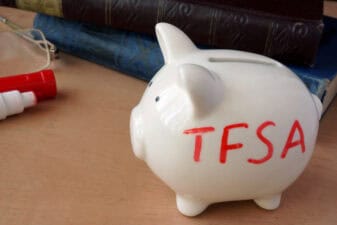If you want to take Canada Pension Plan (CPP) benefits at age 60, you have the right to. According to the CPP program rules, all Canadians are eligible to take CPP as young as 60 years of age. However, the benefits if you start taking CPP at that age are likely to be less than they’d be if you had started taking them later. You could be looking at up to $1,000 per month in foregone benefits if you choose to take CPP as soon as possible rather than wait.
However, taking CPP benefits immediately gives you more total years of benefits. There’s a case to be made for taking CPP at 60, but there’s also a case to be made for waiting until age 65 or 70. In this article, I will explain what you will need to do before you decide to take CPP at age 60.
Speak with a financial planner
Before you decide when to start taking CPP benefits, you should speak with a financial planner. Such a professional will be able to get you the answers to such questions as the following:
- How much will I get in CPP benefits if I take them right away at age 60?
- How much will I get if I wait until age 65/70?
- How much income will I need to cover my expenses in retirement?
- If I elect to take CPP at age 60, what can I do to make sure I have enough income coming in to cover expenses.
Your advisor’s answers to the first three questions are likely to vary quite a bit with your individual circumstances. As for the last question, your adviser is very likely to answer it by saying, “You should invest your money.”
Some assets your financial planner might recommend you invest in
If you talk to a financial advisor, they’re likely to recommend that you invest in a diversified portfolio of assets. Most likely, some combination of stocks, bonds and index funds will be part of the mix. Exchange-traded funds (ETFs) are the securities most frequently recommended to retirees these days. They offer a lot of diversification that removes some of the risk from an investment. Some advisors also recommend investing in individual stocks; if you invest in those, you’ll have to make sure you stay very informed about your holdings.
Take Fortis (TSX:FTS) for example. It’s a Canadian utility stock with a 4.3% dividend yield. It has raised its dividend every single year for the last 50 years, making it a “Dividend King.” Its stock has outperformed both the TSX and the TSX utilities sub-index over the last five years. Despite this fact, the stock is still relatively cheap, trading at 18 times earnings.
Despite all of the things Fortis has going for it, it is subject to many risk factors as well:
- Rising interest rates. Fortis has a lot of debt, some of it is variable rate, so its interest expenses go higher the higher interest rates go.
- Cost of doing deals. Fortis has expanded a lot over the last 30 years, but with rates rising, it will be more expensive to continue doing so going forward.
The risk factors above illustrate why FTS stock is not a “sure thing.” Nevertheless, the company’s modest valuation and high-income potential do help to illustrate what’s possible with dividend stocks.








